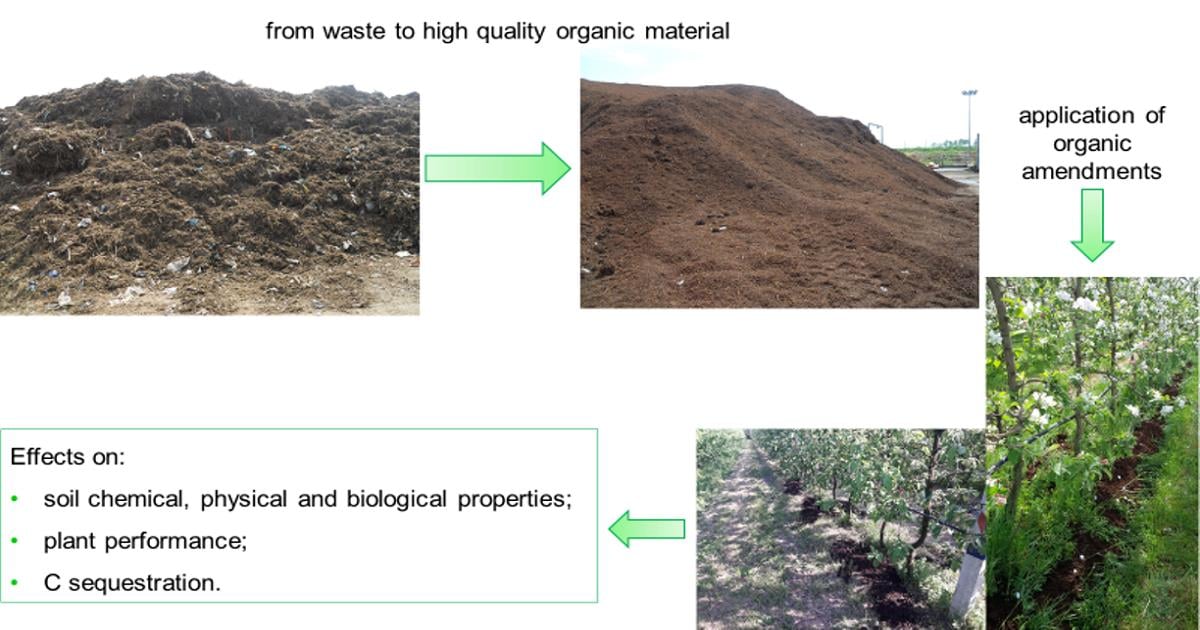Application of Organic Amendments in Agricultural Production—Volume II
A special issue of Agronomy (ISSN 2073-4395). This special issue belongs to the section "Soil and Plant Nutrition".
Deadline for manuscript submissions: 30 April 2024 | Viewed by 1487

Special Issue Editor
Interests: soil organic matter; root morphology and physiology; fruit tree mineral and organic nutrition; fruit quality; soil sickness
Special Issues, Collections and Topics in MDPI journals
Special Issue Information
Dear Colleagues,
Soil is an essential resource for plant growth and yield. It undergoes a rapid degradation process in intensive agricultural areas, but it has extremely slow formation and regeneration mechanisms. As a consequence, soils of agroecosystems are severely depleted of organic matter and macro-/micronutrient pools. In addition, the production of urban and industrial organic wastes is increasing worldwide, and environmentally friendly strategies for their disposal, e.g., compost production, have been developed. Furthermore, the application of organic fertilizers could help to mitigate the negative effect of the increase in atmospheric carbon dioxide, since they can sequester C into the soil. The necessity of bringing together economic and ecological issues has led to an increase in the use of organic fertilizers worldwide since, in addition to their positive effects on soil chemical, physical, and biological properties, they also improve plant performance.
The aim of this Special Issue is to highlight the effect of different organic amendments on plant performance, soil quality, and the environment. Manuscripts dealing with the effect of organic amendment supply on plant performances, soil chemical, physical, and biological properties, and carbon sequestration will be considered.
Dr. Elena Baldi
Guest Editor
Manuscript Submission Information
Manuscripts should be submitted online at www.mdpi.com by registering and logging in to this website. Once you are registered, click here to go to the submission form. Manuscripts can be submitted until the deadline. All submissions that pass pre-check are peer-reviewed. Accepted papers will be published continuously in the journal (as soon as accepted) and will be listed together on the special issue website. Research articles, review articles as well as short communications are invited. For planned papers, a title and short abstract (about 100 words) can be sent to the Editorial Office for announcement on this website.
Submitted manuscripts should not have been published previously, nor be under consideration for publication elsewhere (except conference proceedings papers). All manuscripts are thoroughly refereed through a single-blind peer-review process. A guide for authors and other relevant information for submission of manuscripts is available on the Instructions for Authors page. Agronomy is an international peer-reviewed open access monthly journal published by MDPI.
Please visit the Instructions for Authors page before submitting a manuscript. The Article Processing Charge (APC) for publication in this open access journal is 2600 CHF (Swiss Francs). Submitted papers should be well formatted and use good English. Authors may use MDPI's English editing service prior to publication or during author revisions.
Keywords
- soil organic matter
- carbon sequestration
- plant performances
- soil fertility
- nutrient availability
Related Special Issue
- Application of Organic Amendments in Agricultural Production in Agronomy (22 articles)





